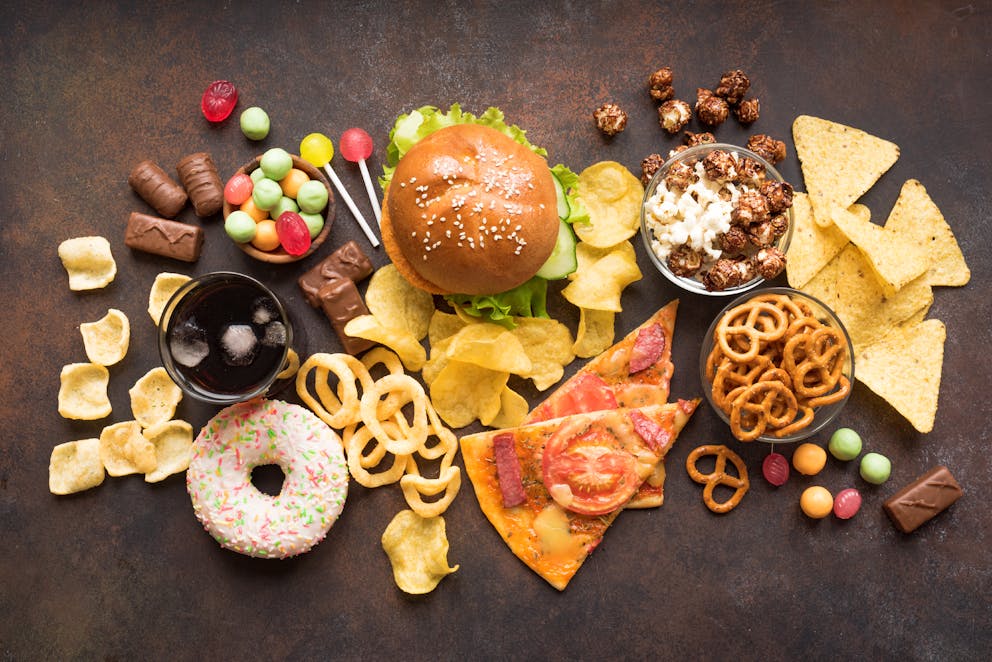Guess Which Percent Of Chemicals in Your Food Are Self-Certified and Not FDA Approved?
Guess Which Percent Of Chemicals in Your Food Are Self-Certified and Not FDA Approved?
Let's pull back the curtain on what’s really in our food. The FDA has a list called Generally Recognized As Safe, or GRAS for short. It sounds reassuring, right?
But here's where it gets sticky: companies can self-certify their chemicals as safe without waiting for FDA green lights.
We're peeling away the layers of this complex issue to reveal some unsettling truths. You'll learn about that sneaky loophole letting additives slide into your diet and why certain ingredients banned in Europe are still mingling with American meals.
From nitrates lurking beyond meat counters to preservatives that may do more harm than good, we’re diving deep into everyday eats and drinks. We’ll also toss you some life-saving tips on dodging these hidden hazards by becoming a label-reading ninja.
Buckle up; knowledge is power, especially regarding what we eat.
Unpacking the FDA's GRAS List and Self-Certification
The FDA's Generally Recognized As Safe (GRAS) list sounds reassuring, right? It turns out there's more to it. Companies can self-certify their chemicals as safe without waiting for a thumbs-up from the FDA.
That means they're at the wheel when deciding what goes into your snacks and sodas.
What Does GRAS Mean?
Say you're a food manufacturer with a new preservative that keeps donuts fresh for weeks. Under GRAS, if experts agree it's safe based on available science or history of use in food, you could skip directly to market launch.
There is no need for an official green light from the authorities first.
But let's face facts: not all companies have pure intentions or rigorous standards. And here's a hard-to-swallow pill: almost all—99%—of around 10,000 chemicals used in our foods never get reviewed by the FDA before ending up on grocery shelves.
The Loophole in Food Safety Regulations
This loophole is like permitting students to grade their exams; some might be strict, while others will gladly slap an A+ on top without hesitation or merit. What does this mean for us consumers?
We're left navigating aisles filled with items containing ingredients that haven't faced stringent testing—or any at all by federal regulators.

The International Perspective on Food Additives
Regarding what's on our plates, the United States and Europe could be dining at different tables. The US allows some chemicals in food that Europe gives a firm "no thanks" to.
For instance, did you know many additives permitted by the FDA are shown the door when they knock on Europe's regulatory gate?
Banned Across the Pond
In America, we might shrug off certain ingredients like azodicarbonamide - yep, that yoga mat chemical – but across the Atlantic? It’s banned. Why?
Europeans tend to take a more precautionary approach towards food safety; if there's doubt about an additive’s health impact, they'd rather keep it out of their baguettes and bodies.
But here's where things get spicy: numerous substances that grace American grocery shelves with FDA blessing are vetoed by European watchdogs due to potential health risks. We're not just talking about one or two rogue rebels – there’s quite a list.
This stark contrast between continents shows how cultural values and risk assessment models can shape what ends up as dinner—or doesn't.
Chemicals of Concern in Our Daily Diet
Imagine your daily diet as a busy highway—foods are the vehicles, and additives like nitrates are hitchhikers with questionable intentions.
Although widely used to preserve meats, these compounds do more than keep your bacon crispy; they're linked to an increased risk of cancer when consumed in high amounts or contaminating our drinking water.
Nitrates - Not Just a Meat Issue
Beyond giving processed meats their pink hue and long shelf life, nitrates can sneak into your system through less apparent routes. They find their way into vegetables fertilized with nitrate-rich soil and sometimes seep into groundwater sources.
So, even if you've said no to deli slices, you might still get an unwanted dose from a glass of tap water.
The health stakes are high because once inside the body, some nitrates convert into nitrosamines—nasty chemicals that have shown up uninvited at the cancer-causing party.
The message is clear: it's not just about saying 'no' to cured meats but also being vigilant about where else these potential threats could be lurking.
Preservatives with a Side of Health Risks
Pulling back the curtain on preservatives reveals BHA and BHT hiding behind it—the double act of working hard to keep foods fresh but potentially damaging our bodies in return.
Acting as endocrine disruptors, they mess with hormone levels, which is a severe business since hormones run the show for everything from mood swings to metabolism rates.
BHA doesn't stop there; this synthetic antioxidant moonlights as a known carcinogen while BHT flirts dangerously close by increasing cancer risks too—a fact that's tough to swallow, knowing they’re often nestled within many pantry staples we reach for daily.
Additives That Affect Your Hormones and Thyroid
Potassium bromide takes the cake regarding the additives lurking in your daily bread. It's not just a dough conditioner; it's also linked to significant health concerns.
This chemical is known to mess with your thyroid function—which is essential considering your thyroid is like the CEO of metabolism management in your body.
The trouble doesn't stop there. Potassium bromide can play a blocker against iodine, an element vital for healthy thyroid hormone production.
Imagine trying to make a call, but someone keeps cutting the line—that’s what this additive does by inhibiting iodine uptake, potentially leading to imbalances and disorders.
Oh, and here’s another kicker: potassium bromide has been tagged as a carcinogen—a substance capable of causing cancer in living tissue—which means its effects could be far-reaching beyond just messing with hormones and thyroid, according to research.
You might unknowingly get more than you bargained for when biting into that fluffy loaf or savory pastry.

The Hidden Dangers in Your Beverage and Candy
Brominated Vegetable Oil - More Than Just a Flavor Enhancer
Picture this: you're sipping on your favorite citrus-flavored soda, but what if I told you that same tangy beverage might contain an ingredient with some pretty unsettling side effects? Enter brominated vegetable oil (BVO).
This chemical plays a double duty as a flavor carrier and a flame retardant. Yeah, it's not precisely thirst-quenching info.
Now, let's talk about the impact on your body. BVO latches onto fat cells in your nervous system like unwanted guests at a party—they won't leave. Over time, this can mess with brain function and lead to memory loss or skin lesions because who needs those?
Titanium Dioxide - Not Just for Paints
Moving over to the candy aisle, we've got titanium dioxide-giving sweets that irresistible sheen. But don't let its good looks fool you; it's not just there for eye-candy purposes—it could be playing tricks on more than just our taste buds.
This additive is linked to DNA damage—think of it as tiny molecular hammers chiseling away at the very essence of what makes us tick—and an increased risk of cancer, which no one invited to snack time.
Empowering Consumers Through Awareness and Choices
Knowing what's in your food is a big deal. You're the boss of your body, so you have every right to call the shots on what goes into it. The first step? Learning how to read labels like a pro.
Decoding Labels to Avoid Harmful Additives
Becoming label-savvy starts with understanding that some ingredients do more harm than good. For instance, while nitrates might keep your deli meats looking fresh, they can also increase your risk of cancer.
And let’s not forget about BHA and BHT—these preservatives may help snacks stay edible longer but come with their bag of tricks for disrupting hormones.
The plot thickens when we talk about our daily bread—or rather, potassium bromate in it—which could be throwing shade at thyroid health while masquerading as just another dough conditioner.
As consumers, we must scrutinize ingredient lists because knowledge is power—and, in this case, potentially healthier choices.
Conclusion
So, you've seen the facts. Are self-certified chemicals in food FDA-approved? Not always. You now know that GRAS doesn't mean a green light from the FDA.
Think twice about what's on your plate. Remember, some additives deemed safe here are banned in Europe.
Look out for those nitrates and preservatives; they're not just keeping your food fresh but may pose real risks to your health.
Pick up those labels; read them like a pro. Your well-being could depend on it.
Dig deeper, choose smarter—because when it comes to what we eat, staying informed is key to staying healthy.
Next blog
The #1 Vitamin Deficiency Behind VertigoTags

Popular
08/21/2024
55.8K views
02/23/2025
46.9K views
11/18/2024
281.5K views
03/18/2024
11/21/2022




